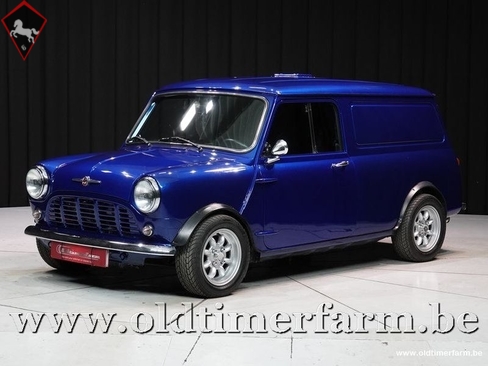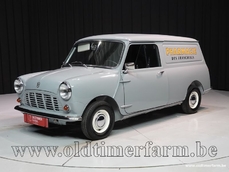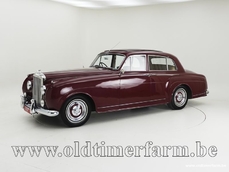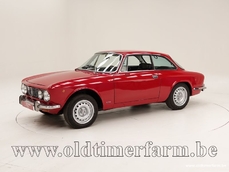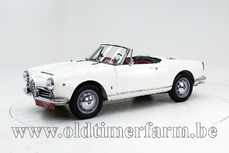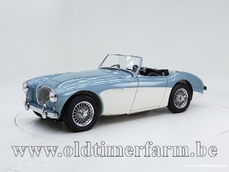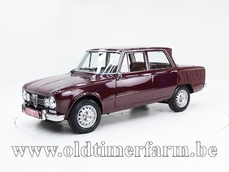Mini Van 1000 '80 1980
General description :
Mini Van was a commercial panel van rated at ¼-ton load capacity. Built on the longer Traveller chassis but without side windows, it proved popular in 1960s Britain as a cheaper alternative to the car. It was classed as a commercial vehicle and as such carried no sales tax. A set of simple stamped steel slots served in place of a more costly chrome grille. The Mini Van was renamed as the Mini 95 in 1978, the number representing the gross vehicle weight of 0.95 tons. 521,494 were built. Despite this renaming, the motoring public continued to call it the Mini Van. Specifications Bodywork Length : cm (in): 317 (124.6) Width : cm (in): 141 (55.5) Height : cm (in): 135 (53) Wheelbase : cm (in) : 204 (80.2) Weight: kg (lb) : 638 (1407) Mechanics. Displacement : straight-four 998 cc (61 cu in), front-mounted Valve gear : 8 Fuel system : 1 SU carburetor Gearbox : 4-speed manual Drive wheels : front-wheel drive LHD Maximum power : 44 hp at 5250 rpm Maximum torque : 75 Nm at 2900 rpm Maximum speed : 125 km/h (78 mph)
http://www.oldtimerfarm.be/en/collection-cars-for-sale/5145/mini-van-1000-80.php
1980 Mini Van 1000 '80 is listed sold on ClassicDigest in Aalter by Oldtimerfarm Dealer for €13500.
Car Facts
Car type : Car Make : Mini Model : Van Model Version : 1000 '80 Engine size : 0.0 Model Year : 1980 Location : Aalter
Sold
Seller Information
Sold
People who viewed this Mini Van also viewed similar Mini listed at ClassicDigest
Other cars listed for sale by this dealer
About Mini
The Mini is indeed an iconic car that revolutionized the automotive industry and set the standard for compact cars. Here's a brief history of the Mini, its development, and some of the key versions of the classic Mini:1. Origins and Development:
Founder and Designer: The Mini was designed by Sir Alec Issigonis, a British-Greek automotive engineer.
Introduction: The Mini was officially introduced by the British Motor Corporation (BMC) in 1959.
Innovative Design: Issigonis' design featured a transverse engine, front-wheel drive, and a compact layout, maximizing interior space.
2. Classic Mini Models:
Mark I (1959–1967):
Mini Cooper (1961): The performance-oriented Cooper version, developed in collaboration with racing legend John Cooper, was introduced.
Mark II (1967–1970):
Minor design changes, including a redesigned grille.
Mark III (1969–2000):
Introduction of the Clubman and Clubman Estate variants.
Further design updates, including a more rounded front grille.
3. Mini Cooper S:
Performance Variant: The Mini Cooper S, particularly the Mk I version, became famous for its success in rally racing, winning the Monte Carlo Rally multiple times.
4. Mini Moke:
Utility Vehicle: The Mini Moke was a utility vehicle based on the Mini platform, featuring an open-top design. It gained popularity in various warm-weather locations.
5. Mini Countryman:
Extended Version: The Mini Countryman was introduced as a longer and more practical version of the classic Mini. It featured a rear-hinged door for easier access to the rear seats.
6. End of Production:
Later Years: Production of the classic Mini continued until the year 2000.
Final Editions: The last classic Mini rolled off the production line on October 4, 2000, marking the end of an era.
7. BMW Era and New MINI:
BMW Acquisition: BMW acquired the rights to the Mini brand and introduced the new MINI in 2001.
Modern Interpretation: The new MINI retained some design cues from the classic but featured modern technology and safety standards.
8. Legacy and Influence:
Cultural Icon: The classic Mini became a cultural icon, symbolizing British design and efficiency.
Influence on Compact Cars: The Mini's layout and design principles influenced the development of compact cars for decades to come.
The Mini's impact on the automotive industry goes beyond its compact size; it represents a design philosophy that prioritizes efficiency, space utilization, and a fun driving experience. The classic Mini's enduring popularity is a testament to its timeless design and innovative engineering.
